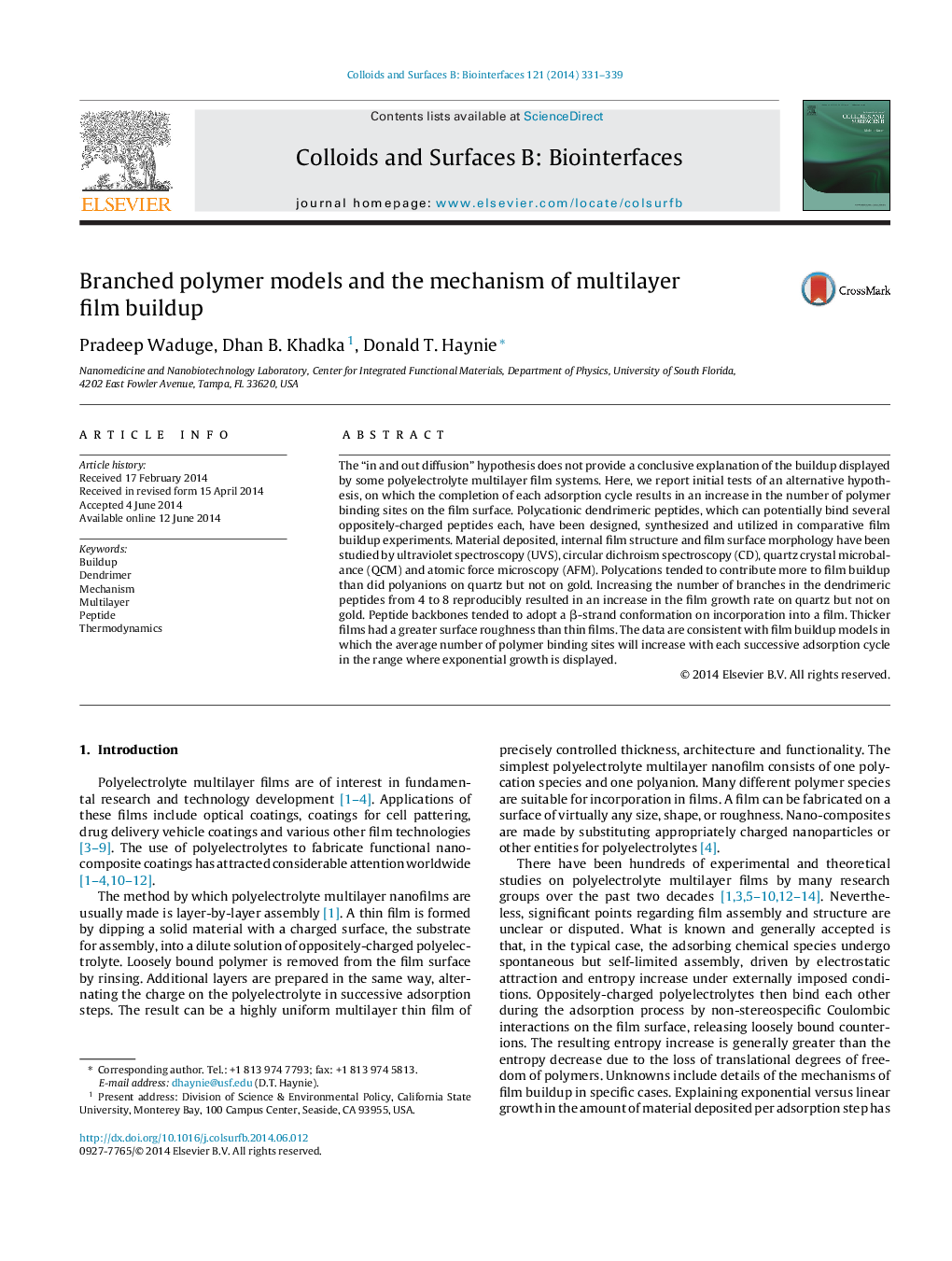| Article ID | Journal | Published Year | Pages | File Type |
|---|---|---|---|---|
| 599640 | Colloids and Surfaces B: Biointerfaces | 2014 | 9 Pages |
•The mechanism of polyelectrolyte multilayer film buildup is unclear.•We have utilized dendrimeric peptides to test a possible buildup mechanism.•Film buildup was monitored and analyzed by several biophysical methods.•Peptide backbones tended to adopt a β-strand conformation in films.•The number of polymer binding sites increases with successive adsorption cycles.
The “in and out diffusion” hypothesis does not provide a conclusive explanation of the buildup displayed by some polyelectrolyte multilayer film systems. Here, we report initial tests of an alternative hypothesis, on which the completion of each adsorption cycle results in an increase in the number of polymer binding sites on the film surface. Polycationic dendrimeric peptides, which can potentially bind several oppositely-charged peptides each, have been designed, synthesized and utilized in comparative film buildup experiments. Material deposited, internal film structure and film surface morphology have been studied by ultraviolet spectroscopy (UVS), circular dichroism spectroscopy (CD), quartz crystal microbalance (QCM) and atomic force microscopy (AFM). Polycations tended to contribute more to film buildup than did polyanions on quartz but not on gold. Increasing the number of branches in the dendrimeric peptides from 4 to 8 reproducibly resulted in an increase in the film growth rate on quartz but not on gold. Peptide backbones tended to adopt a β-strand conformation on incorporation into a film. Thicker films had a greater surface roughness than thin films. The data are consistent with film buildup models in which the average number of polymer binding sites will increase with each successive adsorption cycle in the range where exponential growth is displayed.
Graphical abstractFigure optionsDownload full-size imageDownload as PowerPoint slide
